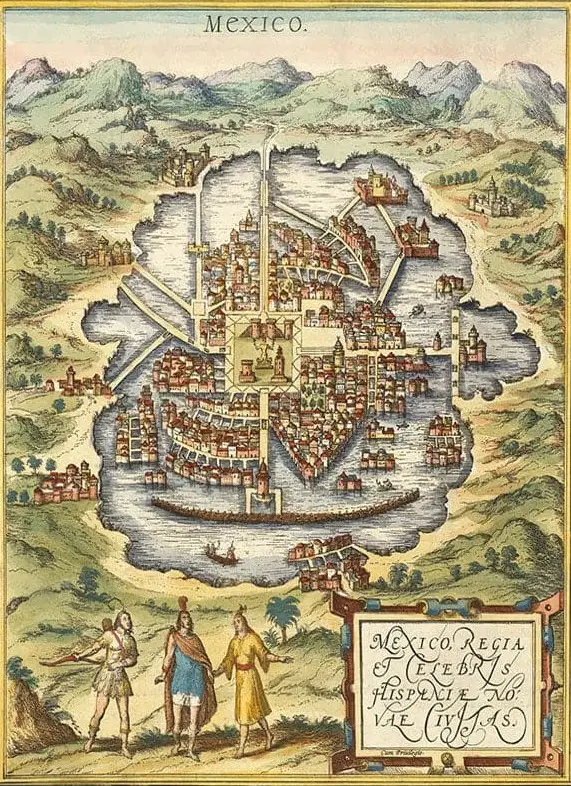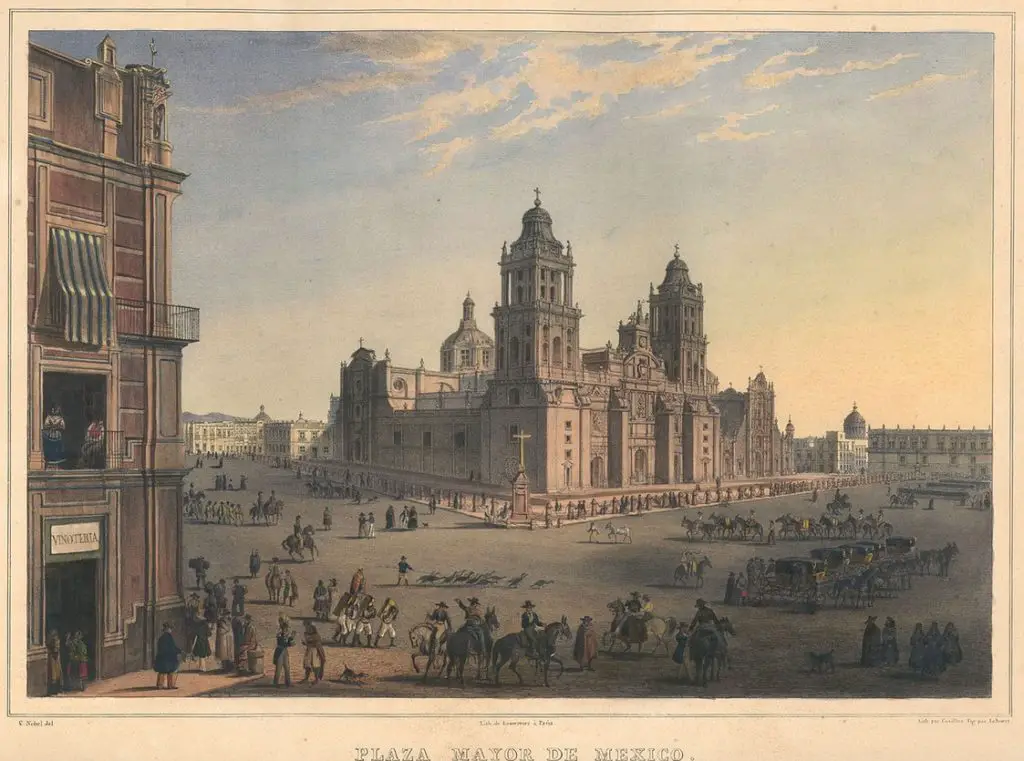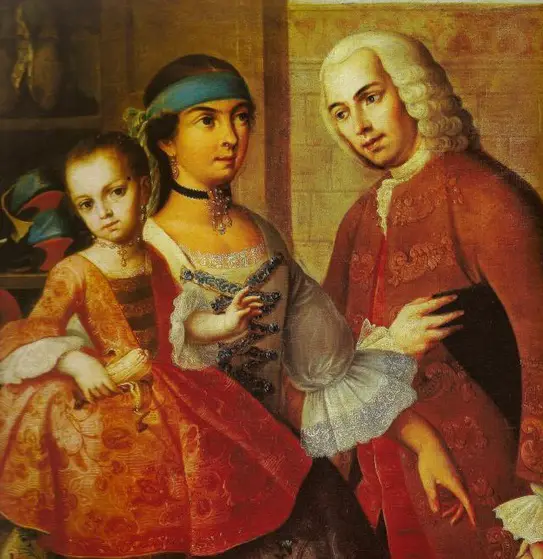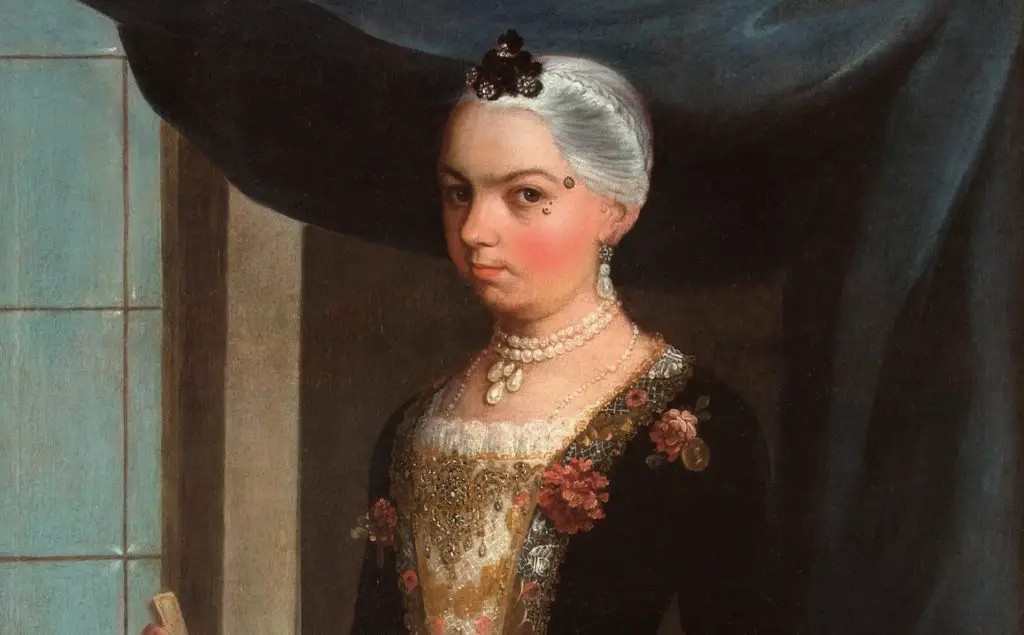Podcast: Play in new window | Download
Subscribe: Apple Podcasts | RSS
 One of the largest cities in the world, Mexico City has a long history. The colonial period, stretching from the 1520s to the 1820s was a vibrant time during which many fortunes were made and lost, and many dramas played out on the public stage. It was also rich time for folklore and legends. Here are three folk stories dating back to Mexico City’s colonial past.
One of the largest cities in the world, Mexico City has a long history. The colonial period, stretching from the 1520s to the 1820s was a vibrant time during which many fortunes were made and lost, and many dramas played out on the public stage. It was also rich time for folklore and legends. Here are three folk stories dating back to Mexico City’s colonial past.
- Clara the Beautiful
In Mexico City sometime in the 1560s, a young married peninsular couple of rank and good resources lived in a large house that was very close to the Plaza Mayor, now known as the Zocalo. This couple was anxious to have a child, but they could not. At last, the woman got pregnant after many difficulties, and she had a beautiful girl named Clara.
The little girl was so beautiful that at the moment of her birth the midwife proclaimed that such beauty would only cause problems, and that God and the Devil would dispute her. As expected, her parents were very shocked by the woman’s words and tried to forget them.
Fifteen years later, Clara had become a young lady and was starting to become noticed in Mexico City society. Not only was Clara incredibly beautiful, but she was also arrogant and rude, because her parents had spoiled her excessively. Potential suitors were turned off by her crass attitude. Given the bad behavior of the girl, the nuns of a nearby convent offered her parents to take her with them, in order to educate her and make her a servant of God. But Clara totally refused to cloister herself.
So, the parents thought of marrying her off. Clara accepted this on the condition that each suitor had to fight a duel with the others she had vying for her hand. The result was that many of them died trying to win the young woman over, and after all that fuss, Clara did not marry.
On one occasion, a handsome gentleman stood below Clara’s balcony and mounted on a white horse, began to play a strange and very beautiful melody, at the end of which he handed the capricious woman a fragrant red rose. Every night the same thing happened, and after ten days the girl fell deeply in love with her gallant serenader.
 One night they agreed to elope, and Clara rode her lover’s steed without stopping to think about the pain that such an action would bring to her parents. As they headed toward the city limits, she patted her lover’s hand. Suddenly, she felt something strange: his hand was hairy and from the tips of his fingers grew horrible long nails. Frightened, Clara looked up at the young man’s face. It had turned into the horrible face of the Devil.
One night they agreed to elope, and Clara rode her lover’s steed without stopping to think about the pain that such an action would bring to her parents. As they headed toward the city limits, she patted her lover’s hand. Suddenly, she felt something strange: his hand was hairy and from the tips of his fingers grew horrible long nails. Frightened, Clara looked up at the young man’s face. It had turned into the horrible face of the Devil.
Faced with such a discovery, the young woman let out a chilling and terrible scream that no one heard. Clara’s parents, realizing she had disappeared, began looking for her accompanied by the local authorities. They couldn’t find her. After fifteen days, the girl was finally found. Her body was discovered in the middle of the field, destroyed by the Devil’s nails that had scratched Clara to death. Such was the terrible fate of the unfortunate spoiled young lady.
- Lázaro and the Dog
Lázaro lived in the middle of the 16th Century in New Spain. He was a mestizo who was discriminated against by both the Spanish and the indigenous. His mother had been a beautiful native woman, a Tlaxcalteca, who had been seduced by a Spanish soldier, who had left her as soon as he found out that she was pregnant.
The young mestizo was madly in love with a very good-looking Mexico-City-born Spanish lady, a criolla, who in turn loved Lázaro passionately. The couple kept their love relationship secret, since they were certain that such an affair would never be allowed by the girl’s parents, who detested the idea of the mixture of Spaniards with the other racial castes that were found in the early days of the Colony.
 Some time passed, without anyone noticing the forbidden love, until one day the girl’s father discovered them together in a passionate embrace. Terribly angry and indignant, the Spaniard swore that he would kill Lázaro for the offense he had inflicted on his family. Immediately the girl was admitted to a convent. And without wasting time, and accompanied by the young man’s treacherous sister, the girl’s father went to the Office of the Holy Inquisition to denounce Lázaro for being a sorcerer and that with his infernal spells he had seduced his daughter.
Some time passed, without anyone noticing the forbidden love, until one day the girl’s father discovered them together in a passionate embrace. Terribly angry and indignant, the Spaniard swore that he would kill Lázaro for the offense he had inflicted on his family. Immediately the girl was admitted to a convent. And without wasting time, and accompanied by the young man’s treacherous sister, the girl’s father went to the Office of the Holy Inquisition to denounce Lázaro for being a sorcerer and that with his infernal spells he had seduced his daughter.
That same day in the afternoon, Lázaro was arrested by the inquisitors and taken to the dungeons of the Inquisition. The sentence was not long in coming, and a few days later the unfortunate mestizo was sentenced to die by hanging. A few days after Lázaro died, a dog appeared in Mexico City that scared all the inhabitants because of its terrifying howls. There had been a longstanding belief in Mexico City, going all the way back to Aztec times, that people died when such an animal appeared to them. So, no one wanted to leave their houses at night so as not to run into such a strange animal.
One night, the dog entered the courtyard of the grand house of Lázaro’s sister who had married a wealthy man. Seeing it, the woman was very scared because she realized that the dog looked a lot like her brother Lázaro whom she had betrayed. Suddenly the dog transformed into the ghost of Lázaro and his sister fell on her knees before him asking for forgiveness. Seeing that his forgiveness did not come, the woman took a knife and stabbed herself in the chest. Her husband, who had witnessed the whole thing, went mad and died soon after.
The father of Lázaro’s girlfriend found out what had happened and was very scared, because he remembered that he was the cause of Lázaro’s death, and he feared what the ghost could do to him. One afternoon as he was leaving a tavern, he felt someone or something following him. Arriving at the door of his house, he turned around and saw the vicious dog that had been terrorizing the city for weeks. The dog transformed into the ghost of Lázaro in front of him. The man screamed and fell down dead.
When the authorities at the Office for the Holy Inquisition found out, they feared for their lives and held a mass to exonerate Lázaro of all guilt. When they were in the church, the door opened, and two ghosts entered accompanied by a dog. One of them, Lázaro, asked the parishioners not to be afraid. He said that he only wanted his body and that of his beloved – who had died fleeing the convent – to be buried in a proper Christian way. Immediately the figures vanished, and only the dog remained. The dog led the people to the poor cabin where Lázaro’s beloved had died of sadness and hunger. Its task accomplished; the dog disappeared. To this day in certain parts of Mexico City the terrible howls of the dog can still be heard at night.
- Blanca the Ugly and the Singing Spring
This story took place in the Springs of Tlalpan, in the middle of the 1600s, when Don Fernando Lorenzo de Guevara, accompanied by two indigenous servants, went hunting and fatally wounded a deer. The wounded animal fled to hide in the dense vegetation, and Fernando, in order not to lose the deer, followed it, sure that at some point the prey would drop dead.
In his pursuit, the young man reached a place where there was a stream. When his servants saw that their master had the intention of jumping over it, full of fear, they yelled at him not to do it, because further on there was what they called a “haunted spring.” Fernando ignored them, dismissing their Indian superstitions, and he continued on his way, until he reached a beautiful waterfall. Standing in front of the falls, the hunter heard a beautiful melody – strange and beautiful songs – inviting him to follow the course of the stream that formed the waterfall.
Night fell and the servants did not dare to go in search of their master. Suddenly they saw him arrive with a strange blank expression on his face. The two servants assisted Fernando, helping him get back to his mansion in Tlalpan. From the time he arrived home, Fernando did not sleep, he had a fever and he laughed and shouted without cause. One day he decided he was well enough to go hunting. He crossed the stream again and came to the source of clear and pure water. He stood by the spring and heard again the beautiful melody that came out of the waters and the beautiful and touching songs, and he saw the most beautiful young woman in all of New Spain. When the young man returned to his house, his health deteriorated worse than before. The young man, intrigued by what was happening to him, sent for one of the oldest servants to explain what was happening at that water source. The old man began his story:
 “A long time ago a young woman named Blanca de Gascón arrived in New Spain. She always wore a veil that covered her face. Because she was good and charitable, everyone considered her to be very beautiful, although no one knew what she looked like behind the veil. There was no shortage of young men who asked for her hand in marriage, but when they approached her and saw her face, they all ran away horrified at how ugly she was. Terribly hurt, the girl turned to black magic to become beautiful: she put animal blood on her face and offered children to the devil. She then became beautiful at night and went out in search of a young man to admire her. When she found him, she with her magic transformed his face into that of any animal. One day, the young woman decided to run away forever, and she committed suicide in the singing spring.”
“A long time ago a young woman named Blanca de Gascón arrived in New Spain. She always wore a veil that covered her face. Because she was good and charitable, everyone considered her to be very beautiful, although no one knew what she looked like behind the veil. There was no shortage of young men who asked for her hand in marriage, but when they approached her and saw her face, they all ran away horrified at how ugly she was. Terribly hurt, the girl turned to black magic to become beautiful: she put animal blood on her face and offered children to the devil. She then became beautiful at night and went out in search of a young man to admire her. When she found him, she with her magic transformed his face into that of any animal. One day, the young woman decided to run away forever, and she committed suicide in the singing spring.”
Fernando did not believe the old servant’s story, and stubbornly returned to the enchanted spring mounted on his favorite horse. He came to the brook and spring bursting with love for the strange young woman in the story. Fernando walked on the water and called out Blanca’s name. She appeared as a real woman who was very much alive. Upon seeing each other, Fernando and Blanca hugged and kissed each other, and hugging each other they sank into the waters of the spring. At the moment of submerging, the beautiful Blanca began to turn into a horrifying being, even uglier than she was when she was alive, because her face appeared rotten and swollen. Fernando didn’t care and he kept hugging Blanca the Ugly anyway.
Since then, the spring has ceased to be enchanted and the beautiful songs were never heard again, nor did the figure of Blanca de Gascón ever reappear. Blanca the Ugly finally found true love.
